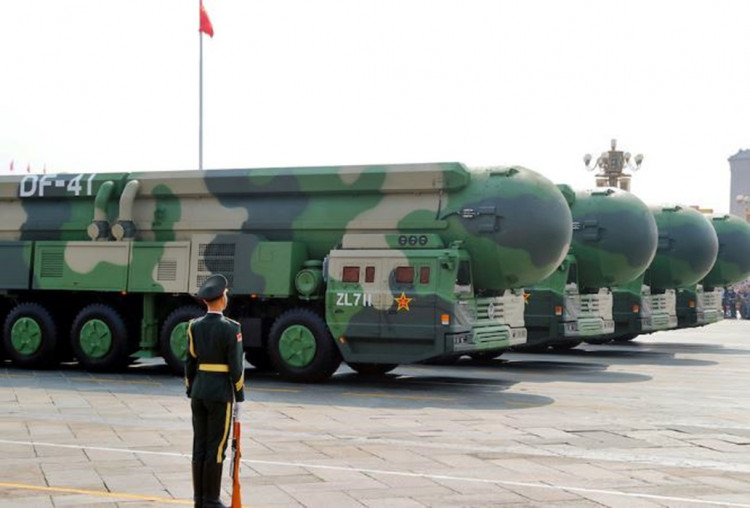China continues to build hardened underground silos for its arsenal of heavy Intercontinental Ballistic Missles capable of delivering nuclear warheads to targets in any part of the continental United States more than 10,000 km away.
The People's Liberation Army Rocket Force, the service branch of the People's Liberation Army controlling China's arsenal of land-based ballistic missiles (both nuclear and conventional), is constructing at least 16 silos at the Jilantai missile training base west of the city of Wuhai in Inner Mongolia.
The new type of underground silos being built covers an area of 200 sq km. The silos are spaced from 2.2 km and 4.4 km apart so no two of them can be destroyed in a single attack by a United States nuclear strike, said a report from the Federation of American Scientists.
PLARF began building the new silos in June 2018, according to FAS. These silos will house China's most powerful ICBM, the three-stage, solid-fuel Dongfeng DF-41 with a range of 15,000 km. They will also launch the solid-fuel Dongfeng 31AG (DF-31AG), an improved version of the original DF-31, with a range of 11,000 km.
Both heavy ICBMs can attack Washington D.C. over 10,000 km away with either a one megaton nuclear warhead or multiple smaller Multiple Independently Targetable Re-entry Vehicleswarheads with a maximum yield of 150 kilotons.
These warheads are incredibly accurate, and can hit within 100 meters of their target. The DF-41 has a maximum speed of Mach 25 (30,626 km/h), with the DF-31AG being only a tad slower.
"Using silos is the most reliable counterstrike method, but these facilities are also key bombing targets for rivals because they're easier to spot using satellites," said Macau-based military analyst Antony Wong Tong.
"These ground-based facilities need to be supported by mobile launchers."
Tong said the new silos suggest China is stepping up the "quantity and quality" of the ground-based missile deployment of its nuclear triad.
Ground-based missiles are PLARF's "strongest and most powerful counter strike" options, said Hong Kong-based military commentator Song Zhongping.
"Increasing land-based ICBM silos is part of China's efforts towards the nuclear triad of ground-based ICBMs, submarine-launched missiles and air-launched weapons. The ultimate goal is to boost nuclear deterrence."
The new silos under construction will add to China's 20 operational silos. This paltry total pales in comparison to the 400 active silos of the United States and Russia's 130 active silos.






